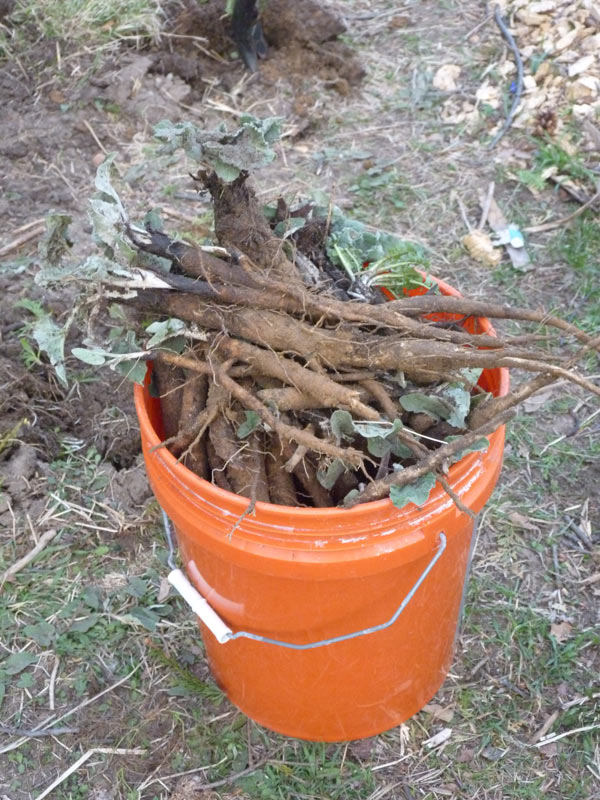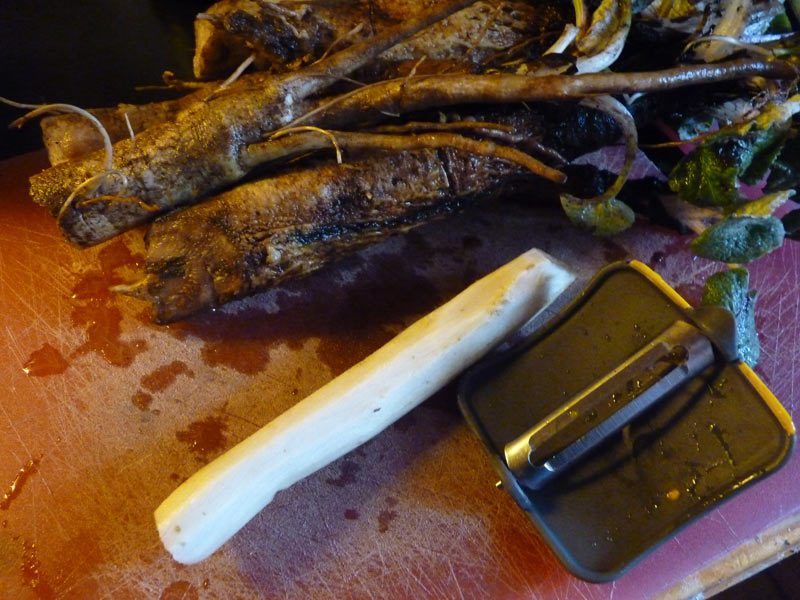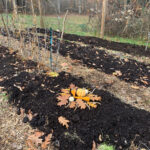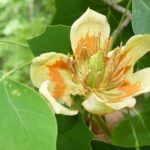
Foraging is an important part of my spiritual path, as it is one of the ways that I build a closer relationship with nature. I also think its an important part of the “oak knowledge” that druids should consider cultivating. As we regain our understanding of the plants, trees, and herbs around us, we grow closer to that landscape. By harvesting food from my backyard growing wild, I’m taking that landscape within and allowing it to nourish me. This nourishment comes in many forms, and not all of them are physical. As our amazing spring returns after a long, hard, winter, I am so excited to get out there and enjoy wild foods!
The early spring or late fall is a wonderful time for wild foods. From violets to ramps to dandelion greens and dryad’s saddle and morel mushrooms, the leafy veggies, edible flowers, and mushrooms are just amazing. What I like about fall is that many of the things you enjoyed in spring are back again, for round two, before the winter sets in.
Today I’ll be covering Burdock. My experience is with arctium minus (common burdock) but what I’m saying can also apply to other burdock species, such as great burdock (arctium lappa). Samuel Thayer, in his awesome book Forager’s Harvest suggests that the great burdock is more tasty than the common burdock. But I only have common burdock, and it tastes just fine to me!
Burdock and its Nutritive and Healing Qualities
Burdock is a wonderful plant, despite the fact that most people who encounter it only remember it for its spiny seed pods that stick to you–and everything else. Burdock is often one of those plants that end up on various township and city’s “noxious weed” lists because of its seed pods. And yes, they can be absolutely wretched and itchy if they end up stuck to your clothing, socks, hair, and so forth. And yet, here is a plant that provides us with nutritive, healing food and medicine anytime the ground is not frozen solid.
Burdock primarily is a nutritive and metabolic tonic; that is, it is rich in minerals and vitamins, and eating it is beneficial for digestion. It is best eaten fresh or tinctured. For a complete list of burdock’s medicinal qualities, I highly suggest Jim McDonald’s discussion of burdock. Grieve’s Modern Herbal also has a nice entry. Burdock is one of those great plants that you can eat like food, cause it is food, but it has such good medicinal qualities that its like medicinal food. Its really great and, I think, is really unappreciated!
Identifying and Harvesting Burdock Root
You can find Burdock three seasons of the year–in spring, summer, and fall. Burdock root is best dug in early spring or late fall in late fall. I have a healthy burdock patch on my property, and more comes up each year. I let the seeds fall in the fall and try to push them into the ground with the bottom of my shoe (being careful not to have them stuck to me), because I want the roots and stalks for good eating :).
Based on some tincturing experiments by my dear friend Sara and consultations of some herbals and my herbal instructor, we’ve concluded that the inulin in burdock, which is a source of much of its medicine, is much higher in the fall than in the spring (the plant likely lives off of inulin in the winter to survive). Inulin is a natural carbohydrate found in many plants. So you will want to keep that in mind when gathering your burdock roots.
Late Fall Harvests: The leaves die back in the fall, sending their energy back into the roots. After a good hard frost or two, the burdock leaves will mostly die back on the first year plants. This is the time to harvest the roots, especially for medicinal purposes. You can wait a while to gather after this point, however, eventually the ground will freeze and then you won’t be able to dig the roots deeply. Its easier to identify the burdock in the fall, with its huge green leaves and long skinny stalk, and fuzzy green (and later brown) burs. Usually first and 2nd year plants will be near each other–2nd year plants die off and go to seed at least a month before the 1st year plants lose their leaves.
Early Spring Harvests. Likewise, in the spring, the energy is still in the roots, where nutrients were kept all all winter long, and the nutrients push those nutrients upward and outward and leafy greens and flowers emerge once more. Before that energy returns completely, however, early spring can be a prime time to gather root crops like cattails and burdock. Once the plants just peek above the soil (or the water, in the case of the cattail) then you are ready to harvest. The key with harvesting root crops in early spring is to harvest them early, just when you see them peeking up and can identify them. The longer you wait, the more energy from the roots goes into the leaves, and the roots become less tasty and nutritive. .In early spring you want the early 2nd year plants (the ones that didn’t go to seed the year before).
While its easy to identify burdock in the fall, its still pretty easy in the spring once you know what you are looking for and where to find it–soft, light green heart shaped petals, usually growing in small clusters. The spring clusters will first have two leaves, and then a small rosette. They will have the distinctive burdock smell–slightly bitter. They come up at the same time that the violets bloom, and generally (at least here) before the dandelions bloom. I knew exactly where to look this spring, just in front of my garden along the pathway. Here are the rosettes of the freshly sprouted burdock plants. These burdock plants have to be dug up, because eventually if I let them remain, they will grow burs and the burs will stick to me each time I try to enter my garden.
The following photos are from my spring burdock harvest. The fall burdock plants have much bigger leaves!

Once you find yourself some burdock rosettes, the real fun begins. Ideally, you’ll have a long, narrow shovel (called a drain spade, like this). I don’t have such a shovel, so instead, I put the shovel on one side of the burdock and jump on it, going as deep as I can. Then, I do the same thing on the other side of the burdock. One one side, I dig a small hole as far down as I can next to the burdock root, and finally, pry as much of it as I can up with the shovel. Rarely does the whole root come up, but there is plenty for me to work with using this method. The drain spade is MUCH better. The key to buying a good burdock digging shovel is that it is sturdy–place your foot on the middle of it and try to bend the shovel. If the shovel bends badly, its no good for burdock digging and you’ll break it on your first time out.

While you can get massive roots out of the ground like the one featured in the image below, these are usually more woody and a bit hollow on the inside. Sometimes they can get long black cracks as well. They are still ok to eat, but the younger roots, less than a year old, are much more easy to work with.

The day a friend and I were digging burdock, we filled up a 5 gallon bucket in less than 30 min. We harvested in about a 15′ square area, and there is still a ton of burdock out there for the harvesting.

After we harvested the burdock, we didn’t wash it (you want to wash it right before you eat it to avoid any water loss–water loss is one of the biggest challenges for storing vegetables, even short term). Instead, we put it in bags and stuck it in the fridge. You also want to chop off all the green heads–the greens will cause water loss. Storing in a root cellar would be better for this, but alas, I don’t yet have a good root cellar.

Eating Burdock
To prepare burdock root, you’ll want to start by washing it well. I use a carrot scrubber, which gets off most of the dirt. I don’t wash my burdock until right before eating it. Once you scrub the dirt off of it, you can peel it (I find peeling pretty much necessary b/c its impossible to get fully clean). You’ll see that it looks and acts like a carrot–this is true for the whole preparing process.

You can cook it in the same manner you would a carrot, and it has a similar cooking time. I sliced up this burdock root and threw it in a pan to saute. I then added some leftover rice noodles, leftover pesto pasta, and topped it off with feta cheese. Nums!

Flavor and Taste
Burdock root doesn’t show up a lot in western cooking, but in Japan, it is a highly valued ingredient (you can search for “gobo root” and find all kinds of awesome recipes). I think its really delicious in the right kind of meal. I treat it pretty much like I would a carrot in terms of where I would use it.
In terms of taste, I find burdock to be very mild and slightly sweet. It tastes kinda nutty and earthy, and I find that it compliments many dishes. Since it also has tonic, regenerative, and nutritive qualities, its just great to eat when you can get it. Its also a fantastic food because traditionally one would have long ran out of carrots by this point in the year, and burdock root would get you through the “hunger times” of early spring.



Reblogged this on Intuitive Naturalism and commented:
Super informative! E’rybody got some burdock around them!
Thanks for the reblog! 🙂
It was too good not to share! I appreciate your sharing of such wisdom! Thank you!
You are most welcome! Enjoy the fall Burdock harvest!
What a neat idea! I’m sure I have some burdocks out back. In the absence of a drain spade, I would try loosening the soil with a garden fork before using the shovel. That seems to be the easiest way for me to dig anything.
The garden fork might pierce the burdock root, so be careful. I usually dig up burdock with the shovel, just digging far out. I’ll have to try the garden fork…it is one of my favorite tools. Hail the garden fork! Let me know how it goes! 🙂
I would if I could find a burdock! I would swear there were some out back, but if they were, they aren’t showing up now. I may look farther afield.
This time of year, look for the dead 2nd year stalks covered in brown burs. The 1st year plants will still be green, and will be only on the ground (no stalk). We’ve had a bit of frost here, but they are still green.
Good old gobo! It livens up a stirfry no end, especially when cooked with a little sesame oil. Yum! I admit, though, that I prefer to eat the younger, more succulent roots and use the bigger, more fibrous ones for tinctures and teas. We’re currently working our way through a lovely batch of fresh burdock root tincture (with plenty of inulin in it), and drinking a root tea blend which includes dried burdock root bits in it.
The picture of the very young burdock leaves reminded me of something you may not experience, depending on your local ecosystem conditions: in some parts of the country, certainly out on the West coast, foxglove grows in the same type of conditions that burdock prefers, and young foxglove leaves can be mistaken for baby burdock. (The older leaves are more difficult to confuse, especially once you get to know both plants.) They can be told apart by taste, however. What I was taught was to take a leaf gently between finger and thumb and rub it lightly, then taste my finger. Burdock has a slight but definite bitter tang to its juice, and foxglove doesn’t. Since I gathered my burdock in an area where foxglove ran rampant, I used that test every time I either harvested a young plant or marked one for future harvest.
Sara, thanks for the good info on foxglove. It doesn’t grow wild around here (or anywhere on the east coast that I’ve lived) so its not something that I’ve had to worry about. Take note, West Coasters! 🙂
You’re welcome! I wasn’t sure if foxglove grows wild anywhere on the East coast or not, just that I hadn’t seen any here in Maryland. One of those regional differences…
I should think – and I say this because I prepare much/most of my food this way – that a pressure cooker is very effective for preparing burdock root. Fast, convenient, and obviously energy efficient. Food comes out tender, tasty, often sweeter that it does cooked by other methods, or left uncooked.
[…] though burdock is very powerful, it’s hard to find. So make sure if you plan on using this tea, you find a reliable place that […]
Thanks for linking. Actually, Burdock is an extremely easy to find plant and can be found all across the Eastern US.
Hi, thanks for all the information! I’ve been battling with the copious burdock around here. Not knowing how to harvest for the kitchen, I’ve been only harvesting the leaves for the chickens. Guess what’s for dinner tomorrow?!
Hi Sinead, I’m glad you found the information helpful! Thanks for the comment 🙂
[…] glavne jedi (4), […]
Reblogged this on Rattiesforeverworldpresscom.
Thanks for the thorough info. A question about burdock: I have heard that you should not use the root of burdock that is older than one year (at least not for edible purposes), but I cannot find the answer to why this is or if it is true. Do you have any information about this? Thank you.
Sure, I can explain it to you. Anytime a plant goes to seed, all of the enrgy of the root goes into the seed. Burdock (along with Kale, Mullein, etc) are biennial. This means it has a two year life cycle. In the first year, it produces a basal rosette, producing a very nice root that is designed to survive through winter. In the spring, it still has a nice root. However, as soon as it starts sending up that stalk with flowers and later burs, the energy goes from that root into seed. Thus, the root becomes very woody and hard and shrinks. The best time to harvest burdock is the fall of the first year. If you harvest in the spring of the 2nd year, that’s still ok, but they are much less nutritious as the root has now had to make it through the whole winter. I hope this explains it! 🙂